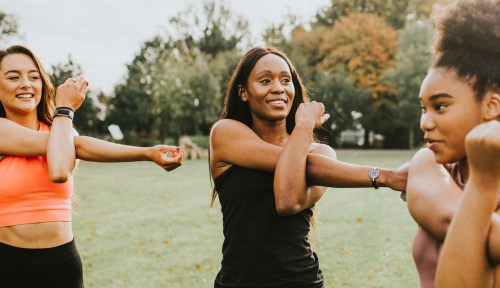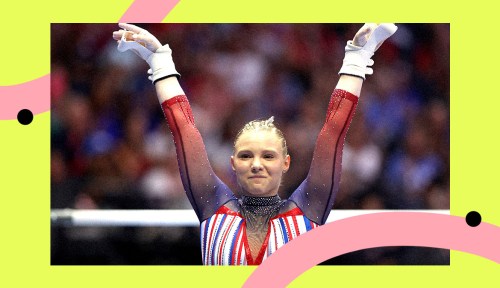There are many “rules” of fitness that, after a while, we simply come to take for granted. But some of these rules may be more fiction than fact. For instance, if you regularly exercise, chances are you’re well familiar with the concept of doing an active cooldown after a hard workout. However, a 2018 scientific review of cooldown studies found that some of the theories behind why we should cool down—to prevent injury and muscle soreness, for instance—aren’t actually backed by science.
Experts in This Article
USA triathlon level 1 coach and an exercise physiologist at the Sports Performance Center at New York University Langone Health
Melissa Prestipino, DPT, is owner of Maize & Blue Rehab in Sparta, New Jersey.
This doesn’t come as a surprise to experts. According to Kaitlyn Baird, CEP, a USA triathlon level 1 coach and an exercise physiologist at the Sports Performance Center at New York University Langone Health, it’s difficult to perform research that accounts for individual responses to exercise and that also looks at outside factors such as sleep, nutrition, and stress—all of which affect recovery and adaptation. So when researchers are studying the effects of active recovery, it’s more reliable to look at immediate rather than the long-term ones, she says.
Still, an active cooldown is beneficial for other reasons you may not realize. Read on to find out why we need to cool down after exercise—and what recovery techniques you can feel okay about skipping.
Actively cooling down is key for cardiovascular function
Although it may not necessarily prevent injury or reduce muscle soreness, doing an active cooldown at a lower intensity level than your main workout helps bring down your heart rate, blood pressure, and breathing to a more normal range after you’ve completed that hard activity.
If you’ve ever gone out for a long run or intense bike ride, or any endurance session or race, and then come to a complete standstill at the end, chances are you’ve felt a little lightheaded or even like you might faint, Baird says. That’s because one way the deoxygenated blood from your legs gets back to your heart is through a movement-based pumping mechanism. When that pumping stops, there’s a momentary pooling of blood in those lower extremities while your blood pressure adjusts.
So if you want to avoid falling down and hitting your head, give yourself a moment for a cooldown, Baird says. “No matter what type of exercise you are doing, take at least a few minutes to perform something similar at a slower rate—running to walking, plyometrics to gentle squatting or stepping side to side, or pedaling much slower on a very light workload after spinning.”
A cooldown may also do some good for your mental state
Ever notice that as you slowly bring your heart rate back to normal, in addition to feeling the relief of having completed your hard intervals, you feel a wave of confidence about what you’ve done? You’re not alone. For many athletes, a cooldown offers a period of reflection.
Cooling down “gives the person a few minutes to switch gears between what they were doing and what they are doing next, to reflect on the work they did, and build confidence and trust around their exercise routine,” Baird says. These aren’t the kinds of benefits you can easily measure with research. “But if you ask practitioners in the field, the cooldown is most certainly an important part of any training session,” says Baird.
Heat may be more beneficial than cold-therapy techniques
You may have long heard that heat techniques are best used before exercise to warm up your muscles, whereas icing is better for afterward to fight inflammation. However, many people don’t tolerate cold and icing well and actually do better keeping the muscles warm, whether that’s through an active cooldown, an Epsom salt bath, a hot shower, or applying a heating pad rather than forcing yourself to sit in an ice bath after exercising, says Melissa Prestipino, DPT, owner of Maize & Blue Rehab in Sparta, New Jersey.
“If you have knee joint arthritis, for example, after significant exercise and warming up the muscles, arthritis ‘craves’ warmth,” Prestipino explains. “Immediately icing or adding cold sometimes has the opposite effect, causing the person to shiver or guard their muscles, making the joint re-tighten again.”
Don’t feel guilty about neglecting your foam roller…
Foam rolling, which was another recovery technique the 2018 review examined, has been recommended as a key recovery tool for years. Chances are you’ve got one tucked in a corner or closet at your home…and chances are you don’t use it as often as you think you should. After all, when you get home after a hard session, it’s likely that the last thing you want to do is get down on the ground for something that often feels like another workout in itself.
But there’s actually no need to feel bad about that—while some people do report less delayed onset muscle soreness with regular foam rolling, it hasn’t been studied long enough to prove this claim, Prestipino says.
…Or skipping that post-workout stretching
Do you tend to find that you feel loosened up and relaxed when you stretch after a workout? These are undoubtedly positive effects. But according to Baird, they’re rooted more in enjoying stretching as an act of self-care rather than warding off muscle soreness and injury. So do it if it feels good, but don’t sub it in for a recovery jog.
Finally, don’t forget about other key components of recovery
Proper fueling and hydration, as well as getting enough sleep, are essential aspects of recovery that shouldn’t be overlooked, especially when it comes to long-duration exercise, Baird says.
“Your body just used a lot of energy and it will need to replenish that energy to both repair any breakdown and stress that the exercise induced, and provide you with some energy for the rest of your day,” she says.
What should you be eating as a post-workout snack or meal? While research suggests having foods high in protein within 15 minutes of cooling down, what and how much you eat and drink depends on your body size, sweat rate, and the exercise you just did. Baird also points out that fueling and hydration needs are highly individualized. Experiment until you find what feels best for your body. And if you’re concerned that your fueling techniques aren’t quite cutting it, enlist the help of a registered dietitian rather than simply trying to copy what your training partners are doing.
Oh hi! You look like someone who loves free workouts, discounts for cutting-edge wellness brands, and exclusive Well+Good content. Sign up for Well+, our online community of wellness insiders, and unlock your rewards instantly.
Sign Up for Our Daily Newsletter
Get all the latest in wellness, trends, food, fitness, beauty, and more delivered right to your inbox.
Got it, you've been added to our email list.











